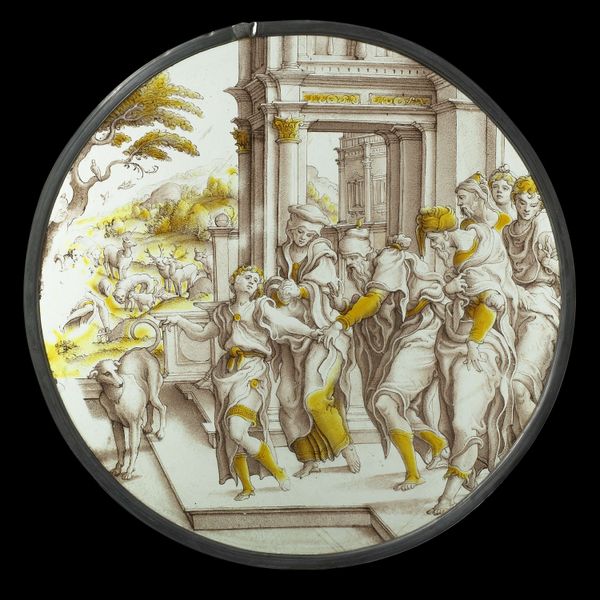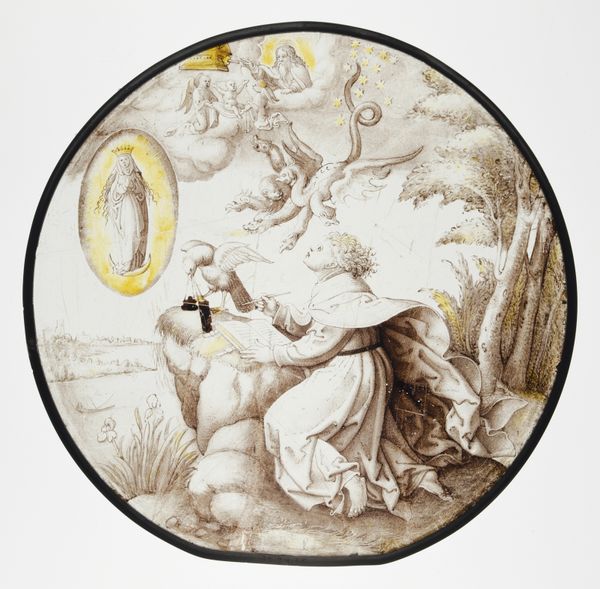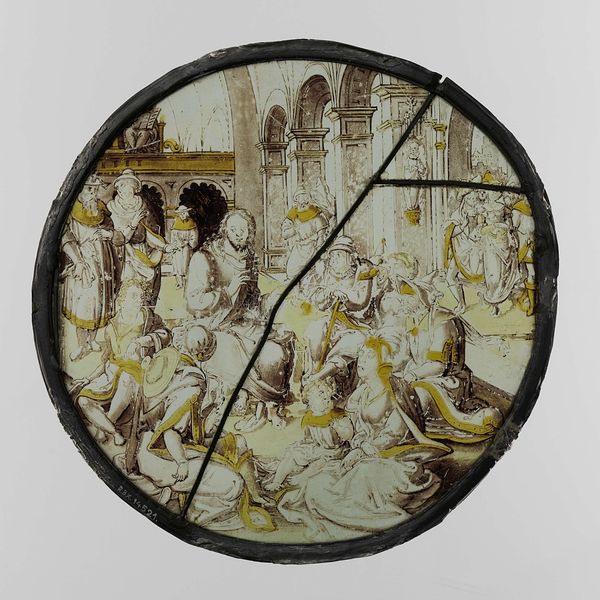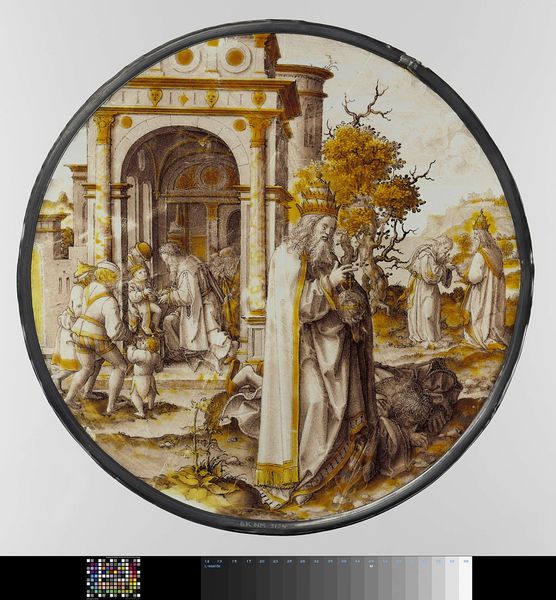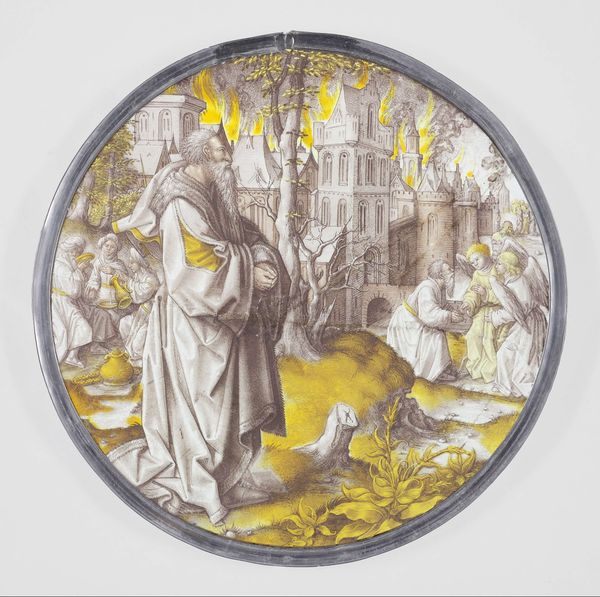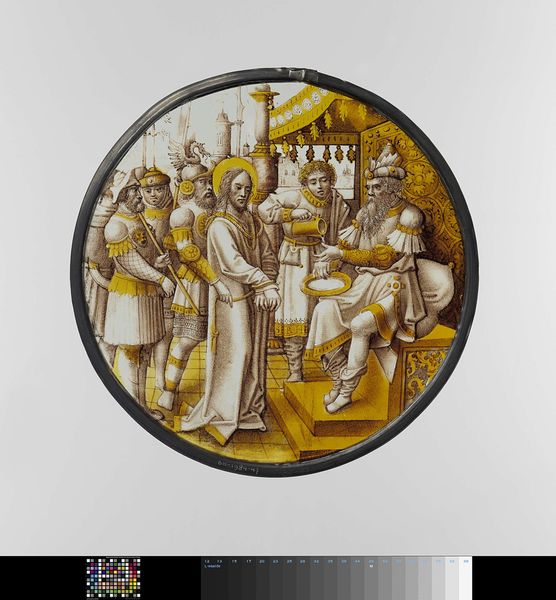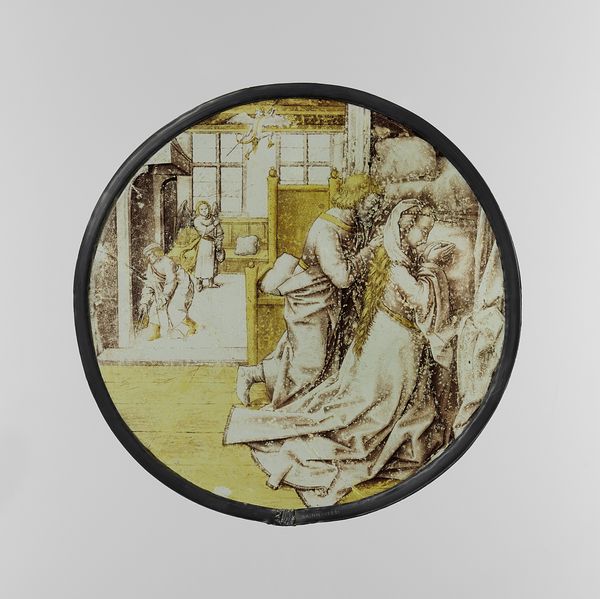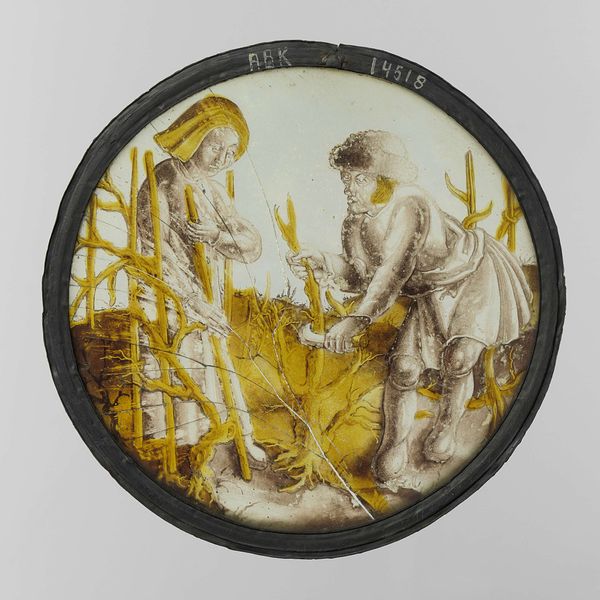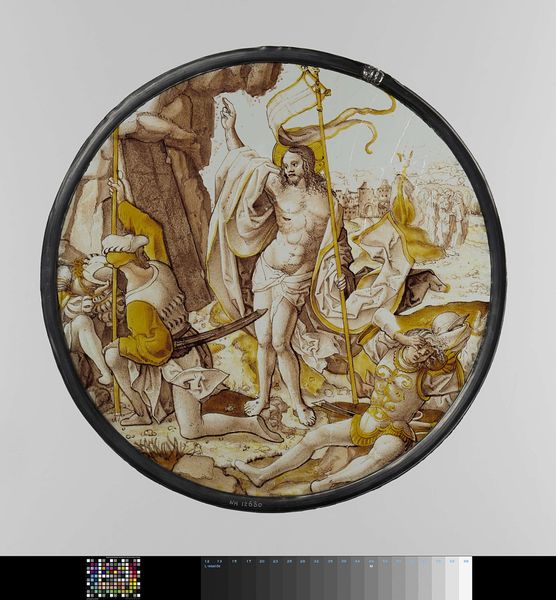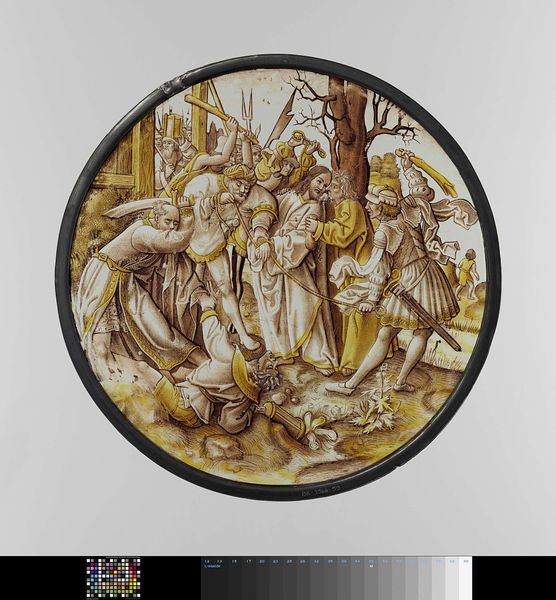
Roundel of The Planet Venus and Her Children 1517 - 1533
0:00
0:00
oil-paint, glass
#
portrait
#
oil-paint
#
figuration
#
11_renaissance
#
glass
#
history-painting
Dimensions: Diameter: 8 1/6 in. (20.4 cm)
Copyright: Public Domain
Curator: Look at this roundel depicting the Planet Venus and her Children, crafted between 1517 and 1533. It is attributed to Jörg Breu the Elder. It’s an oil painting on glass. Editor: My first thought is, there’s something unsettling about the scene it portrays. It has a deceptive calm, almost like the quiet before a storm of the late Renaissance kind. Curator: Well, consider that stained glass roundels like this weren't just decorative; they were often part of complex social narratives. This piece offers a snapshot into the ideologies surrounding wealth and power. See how glass, usually associated with religious structures, is here employed for secular display? The artist transforms a sacred material to comment on terrestrial authority. Editor: Absolutely. This domestic scene reflects contemporary values and perhaps anxieties about excess, gender dynamics, and societal hierarchy, which are all relevant in a conversation of a feminist lens. Are the children blessed, or are they caught in a cycle of materialism? The expressions seem almost detached, hinting at potential downsides to worldly privilege. Curator: I agree, and if you look closely, the figures are individualized. There's meticulous detailing in the drapery and expressions—evidence of careful craftsmanship. Also, oil painting on glass! The material challenges must have been intense, suggesting specialized skill and equipment. It reflects a competitive workshop culture where technical excellence could determine patronage. Editor: Also note how race intersects with status in this visual field: these very white figures partake in very comfortable surroundings. Where is race in all of this luxury, which could have emerged due to some imperial expansion and wealth consolidation happening at the time? The narrative becomes an exclusive visual dialogue, and how complicit is this representation? Curator: Right, such artworks were never just passive objects; they played an active role in shaping, sometimes re-shaping, social structures. Considering that the work is made of pigment and glass in an early modern workshop, seeing the artist's process and material agency embedded within it emphasizes that art making can serve and question powerful interests. Editor: Indeed. Thank you for this artful unearthing. Curator: A fascinating analysis! It makes you see so much more.
Comments
No comments
Be the first to comment and join the conversation on the ultimate creative platform.
